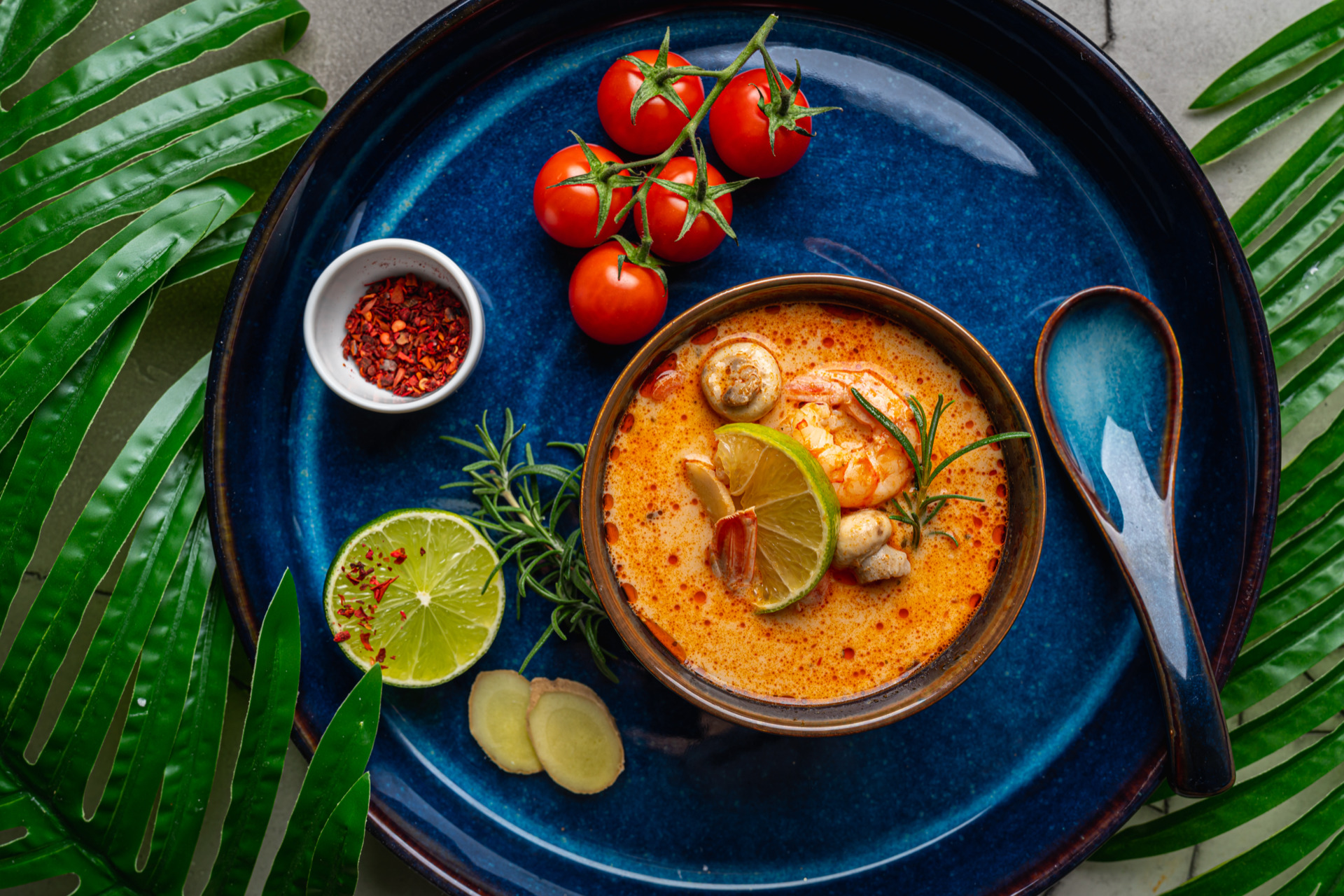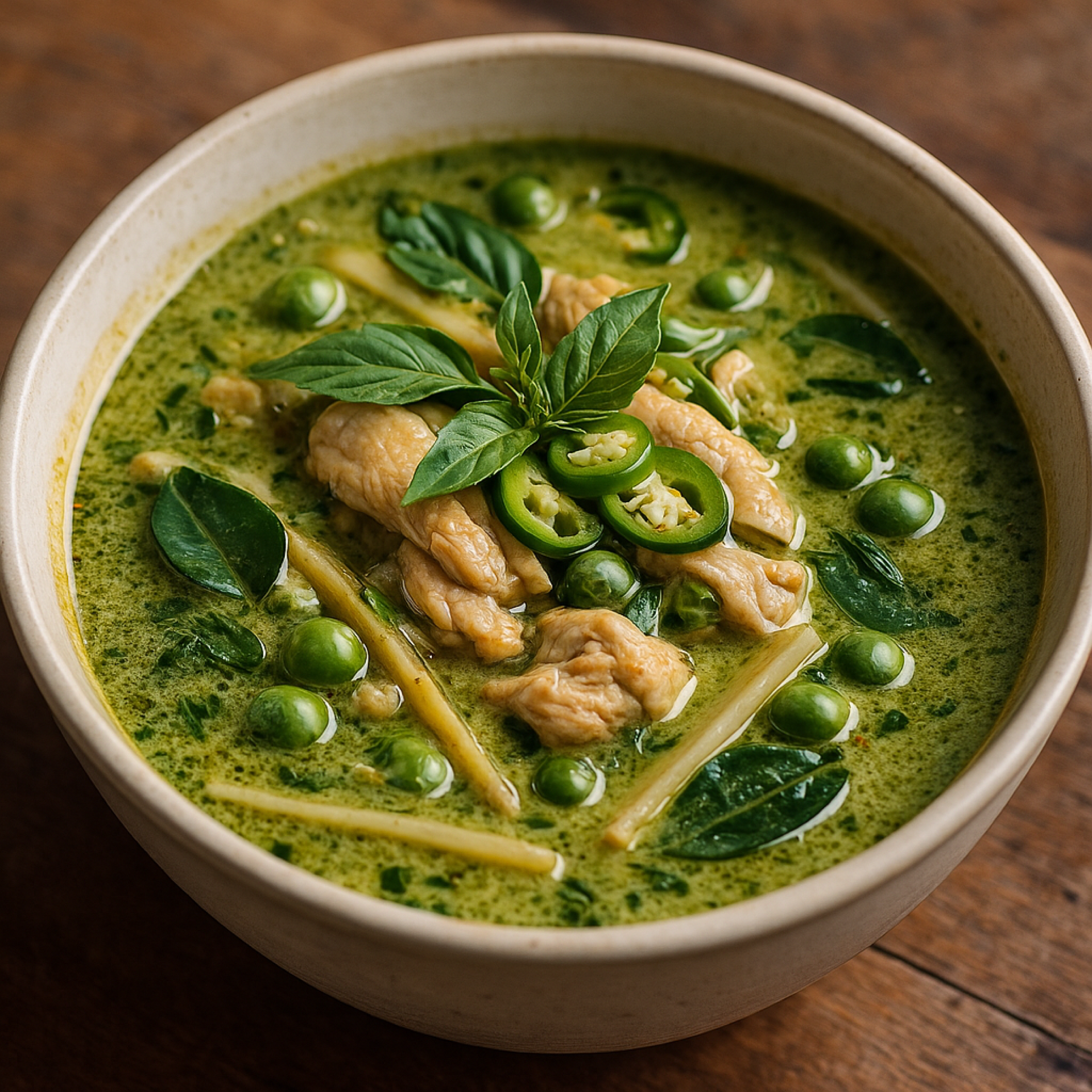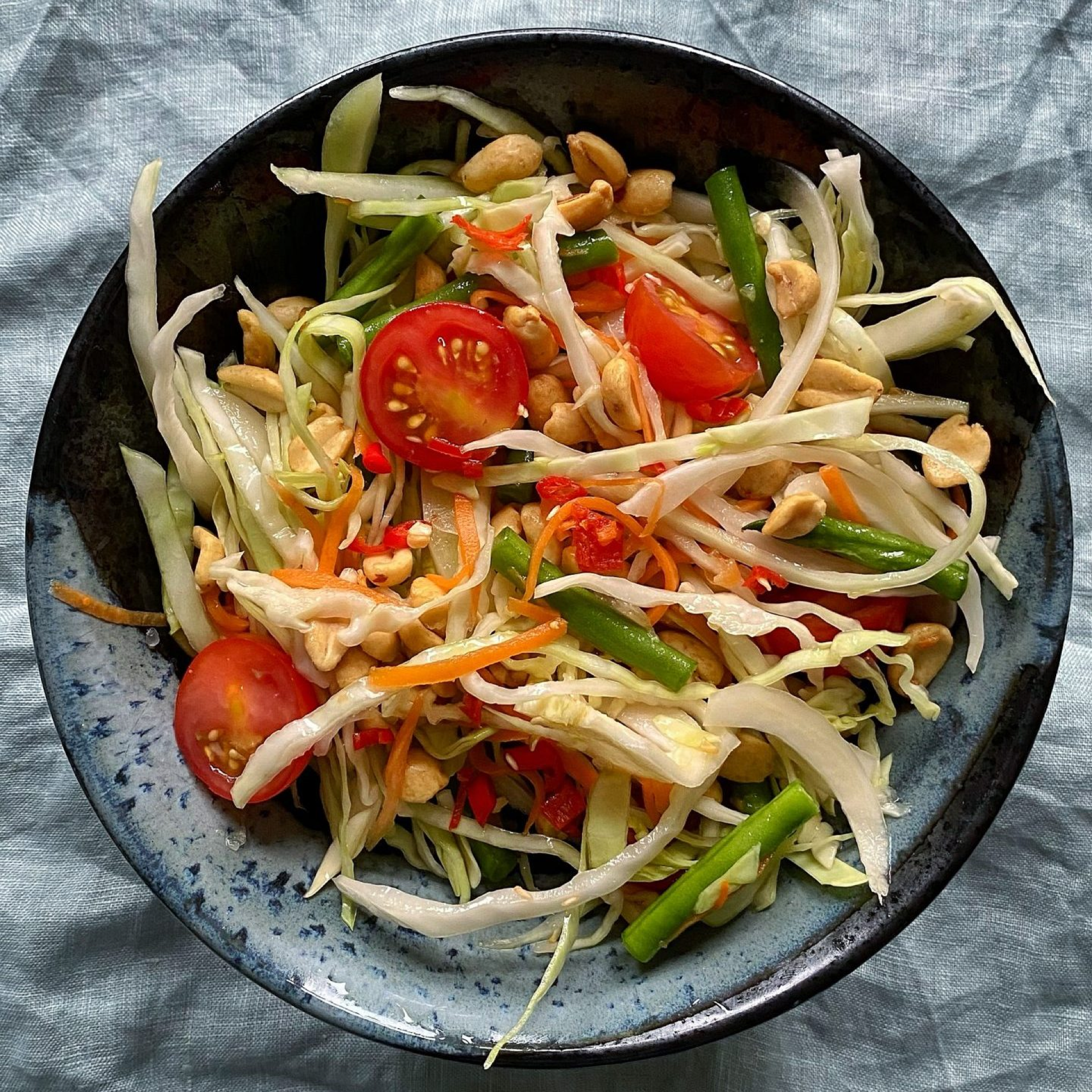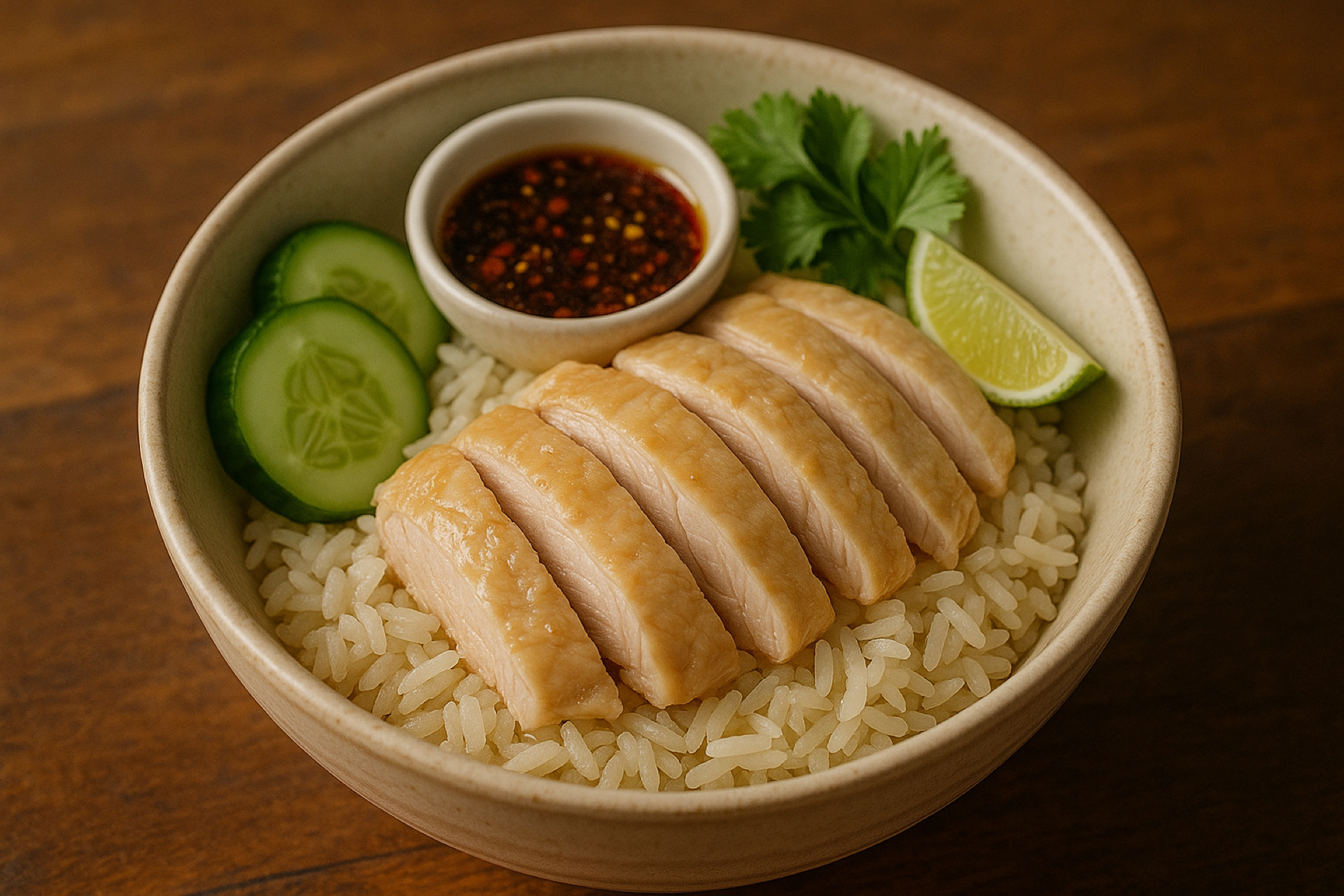Tom Yum Goong — Spicy Shrimp Soup, Thailand's Signature Dish
Tom Yum Goong is not just a soup, it's a symbol of Thai cuisine that has conquered the world with its unique combination of spicy, sour and aromatic flavors. This famous soup with shrimp, lemongrass and Thai spices is a must-try dish for anyone who wants to get acquainted with authentic Thai cuisine. In this article, we'll tell you about the history of Tom Yum, its ingredients, varieties and where to try it best in Thailand.

What is Tom Yum Goong?
Tom Yum Goong is a traditional Thai soup, the name of which translates as "boiling soup with shrimp". "Tom" means to boil, "Yum" — to mix or stir, and "Goong" — shrimp. The soup is characterized by a bright sour-spicy taste, which is achieved through the use of lemongrass, kaffir lime, galangal, Thai chili peppers and lime juice.
Tom Yum Goong is not just food, it's an experience. Every spoonful of this soup is an explosion of flavors: the spiciness of chili peppers, the acidity of lime, the aroma of lemongrass and the sweetness of shrimp create an unforgettable combination.
History of Tom Yum
Tom Yum has deep roots in Thai culinary tradition. The soup was created in central Thailand and was originally prepared as a simple dish from local ingredients: lemongrass, galangal, kaffir lime and fresh seafood. Over time, the recipe spread throughout Thailand and became one of the most recognizable dishes in Thai cuisine.
Today, Tom Yum Goong is one of the most popular Thai dishes in the world and a must-have item on the menu of any Thai restaurant.
Tom Yum Goong Ingredients
Classic Tom Yum Goong consists of the following main ingredients:
Main components:
- Shrimp (Goong) — large fresh shrimp
- Lemongrass (Takrai) — adds citrus aroma
- Kaffir lime (Makrut) — leaves and zest for aroma
- Galangal (Kha) — root similar to ginger, but with a sharper taste
- Thai chili peppers (Prik Kee Nu) — small but very hot peppers
- Mushrooms (usually straw mushrooms or oyster mushrooms)
- Cherry tomatoes
Sauce:
- Fish sauce (Nam Pla) — for saltiness
- Lime juice — for acidity
- Palm sugar — for flavor balance
- Chili paste (Nam Prik Pao) — for additional spiciness and depth of flavor
Garnishes:
- Cilantro (Pak Chee)
- Green onions
- Lime wedges
Varieties of Tom Yum
Tom Yum Goong (with Shrimp)
Classic version with large fresh shrimp. This is the most popular version of the soup, served in most restaurants.
Tom Yum Talay (with Seafood)
Luxury version with various seafood: shrimp, squid, mussels, fish and crab. Especially popular in coastal regions.
Tom Yum Gai (with Chicken)
Version with chicken instead of seafood. Less traditional but very popular among those who don't eat seafood.
Tom Yum Nam Khon (with Coconut Milk)
Milder version with added coconut milk. Coconut milk softens the spiciness and gives the soup a creamy texture.
Tom Yum Nam Sai (without Coconut Milk)
Classic clear version without coconut milk. Spicier and more sour, with a pronounced spice flavor.
Where to Try the Best Tom Yum Goong
In Phuket
In Phuket, Tom Yum Goong is prepared especially well thanks to fresh seafood. Coastal restaurants offer soup with freshly caught shrimp, making it incredibly tasty. We especially recommend restaurants in the Patong area and on Kata Beach.
Best places in Phuket:
- Coastal restaurants with ocean views
- Seafood street stalls at night markets
- Restaurants in Phuket Old Town
In Bangkok
Bangkok offers a huge variety of Tom Yum options. From street stalls to fine dining restaurants — everyone will find their perfect Tom Yum here. Restaurants in the Siam area and at Chatuchak Market are especially famous.
In Restaurants
Restaurants specializing in Thai cuisine usually prepare Tom Yum according to traditional recipes using fresh ingredients. Prices range from 150 to 400 baht depending on the level of establishment.
At Street Stalls
Seafood street stalls offer Tom Yum at more affordable prices (80-150 baht), but quality may vary. It's better to choose stalls where soup is prepared to order, not reheated.
How to Order Tom Yum
When ordering Tom Yum in Thailand, you can specify your preferences:
- "Mai phet" — not spicy (but this will change the character of the dish)
- "Phet nit noi" — a little spicy
- "Phet mak" — very spicy
- "Nam Khon" — with coconut milk (milder version)
- "Nam Sai" — without coconut milk (classic version)
Tom Yum Goong Recipe (Basic)
Although it's better to try the original in Thailand, here's a basic recipe for home cooking:
Ingredients (for 2-3 servings):
- 300g large shrimp
- 1L chicken or fish broth
- 2 stalks lemongrass
- 3-4 kaffir lime leaves
- 3-4 thin slices galangal
- 3-5 Thai chili peppers
- 200g mushrooms
- 5-6 cherry tomatoes
- 3 tbsp fish sauce
- 2 tbsp lime juice
- 1 tsp palm sugar
- Cilantro and green onions for serving
Preparation:
- Heat broth in a pot
- Add lemongrass, kaffir lime and galangal
- Boil for 5 minutes for aroma
- Add mushrooms and tomatoes
- Add shrimp and boil for 2-3 minutes
- Add fish sauce, lime juice and sugar
- Serve hot with cilantro and green onions
Tips for Tourists
-
Start with a small portion — Tom Yum can be very spicy. If you're not used to spicy food, ask for "phet nit noi" (a little spicy).
-
Try different versions — Tom Yum Nam Khon (with coconut milk) is milder than the classic version.
-
Eat with rice — Tom Yum is usually served with white rice, which helps soften the spiciness.
-
Use FoodSensAI — our bot will help you find the best places for Tom Yum near you, taking into account your spiciness preferences.
-
Try in different cities — Tom Yum can differ depending on the region. In Phuket it's prepared with special attention to the freshness of seafood.
Conclusion
Tom Yum Goong is more than just a soup. It's a symbol of Thai cuisine that combines spiciness, acidity, aroma and freshness in one dish. From restaurants in Phuket to street stalls in Bangkok — Tom Yum is prepared differently everywhere, but always with skill and love. Try this dish in different places, and you'll discover all the diversity of its flavors. Use FoodSensAI to find the best places for Tom Yum near you!


